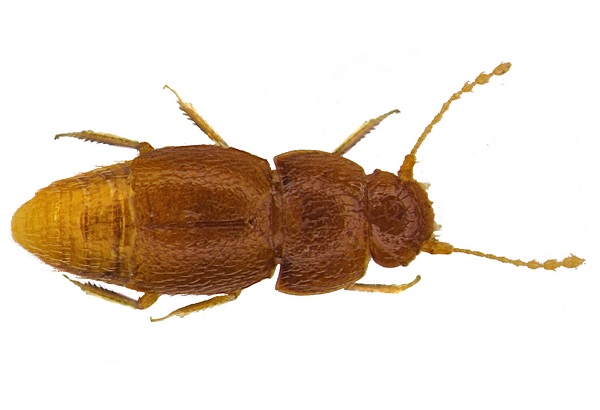We have already seen some of the worlds most unusual beetles, but now we are taking a look at some of the worlds rarest beetles and where to find them. They might not be the most amazing looking, the biggest nor the smallest, but they are all important to the Earths eco-systems and that makes all of them well worth saving. If you love your bugs as much as I do, this post will be of interest…

The Trilobite Beetle (Platerodrilus)
It was thought to be extinct for over 200 years but was found in a small part of the Jungles of Singapore. Almost everything about this beetle remains a mystery, but the good news is study and conservation efforts are underway.

The Stag Beetle (Lamprima aurata)
This is not only a rare insect, but it is also the most expensive to buy for collectors (they often pay $90,000+ per beetle) and that, in turn, is also causing the numbers of this large beetle to be in decline. But the good news is they are not a protected species which means it is illegal to trade in them.

The Tansy Beetle (Chrysolina graminis)
While these beetles are often found in small groups they are still classed as a threatened species. This is mostly down to their habitat being flooded far too often and that, in turn, has lead to a decline in numbers. While habitat conservation is underway there aren’t any specific efforts to save the species.

The Cobblestone Tiger Beetle (Cicindela Marginipennis)
It is once again collectors that are causing this beetles numbers to be in decline, but the good news is numbers of this species have been growing since a ban on them being imported has taken effect. So there is hope for it, despite the low species numbers.
[adinserter block=”7″]

The Curculio Betulae Weevil (Byctiscus betulae)
UK beetles don’t come much more rare than this one. In fact, it was first seen in the Scottish Highlands last year! While it has been seen more commonly elsewhere this was the first time in a number of years it was found in the UK.

The Greta Thunberg Beetle (Nelloptodes gretae)
No, this is not a joke, it is a newly discovered rare species of beetle that was indeed named after the climate activist Greta Thunberg. This was the first and only time it was seen, so obviously numbers are thought to be very rare indeed.

The Rugged Oil Beetle (Meloe rugosus)
Numbers of this species were once thought to be almost extinct, but a recent discovery of a small family of them in the Cotswolds, UK has spurred efforts to save them. The good news is an innovative conservation scheme is well underway to protect and save them.

The Miami Tiger Beetle (Cicindelidia floridana)
This beetle was thought to have been long gone, but ironically a small family of them was found in a piece of rockland near Miami zoo! As you might expect, efforts to protect them are well underway and the exact area is kept a secret.
[adinserter block=”8″]

The Valley Elderberry Longhorn Beetle (Desmocerus Californicus Dimorphus)
It might have a long name, but it doesn’t have a long future ahead of itself. The main problem is that it is only found on one type of plant which sadly makes them easy pickings for collectors. But they are classed as a protected species so there is at least a small glimmer of hope.

The Five-horned Rhinoceros Beetle (Eupatorus gracilicornis)
Most species of Rhino beetles are not that rare, but this one is and once again it is due to it being a highly sort-after collector’s item. Despite its large size, it is still a flying beetle and ability does at least mean the species is spread out and there is real hope that it will grow in numbers on its own.
Sources Used…
- https://www.youtube.com/watch?v=ov04lnJiWtc
- http://www.documentarytube.com/articles/stag-beetle-the-most-expensive-insect-in-the-world
- https://en.wikipedia.org/wiki/Tansy_beetle
- https://www.cbc.ca/news/canada/new-brunswick/grand-lake-cobbelstone-tiger-beetle-endangered-1.4770002
- https://www.bbc.co.uk/news/uk-scotland-highlands-islands-45496089
- https://www.bbc.co.uk/news/world-europe-50182815
- https://www.biologicaldiversity.org/species/invertebrates/Miami_tiger_beetle/index.html
- https://www.kcet.org/redefine/rare-california-beetle-will-stay-protected
- https://www.amazon.com/Giant-Beetle-Taxidermy-Insect-Entomology/dp/B00I9JMP6G